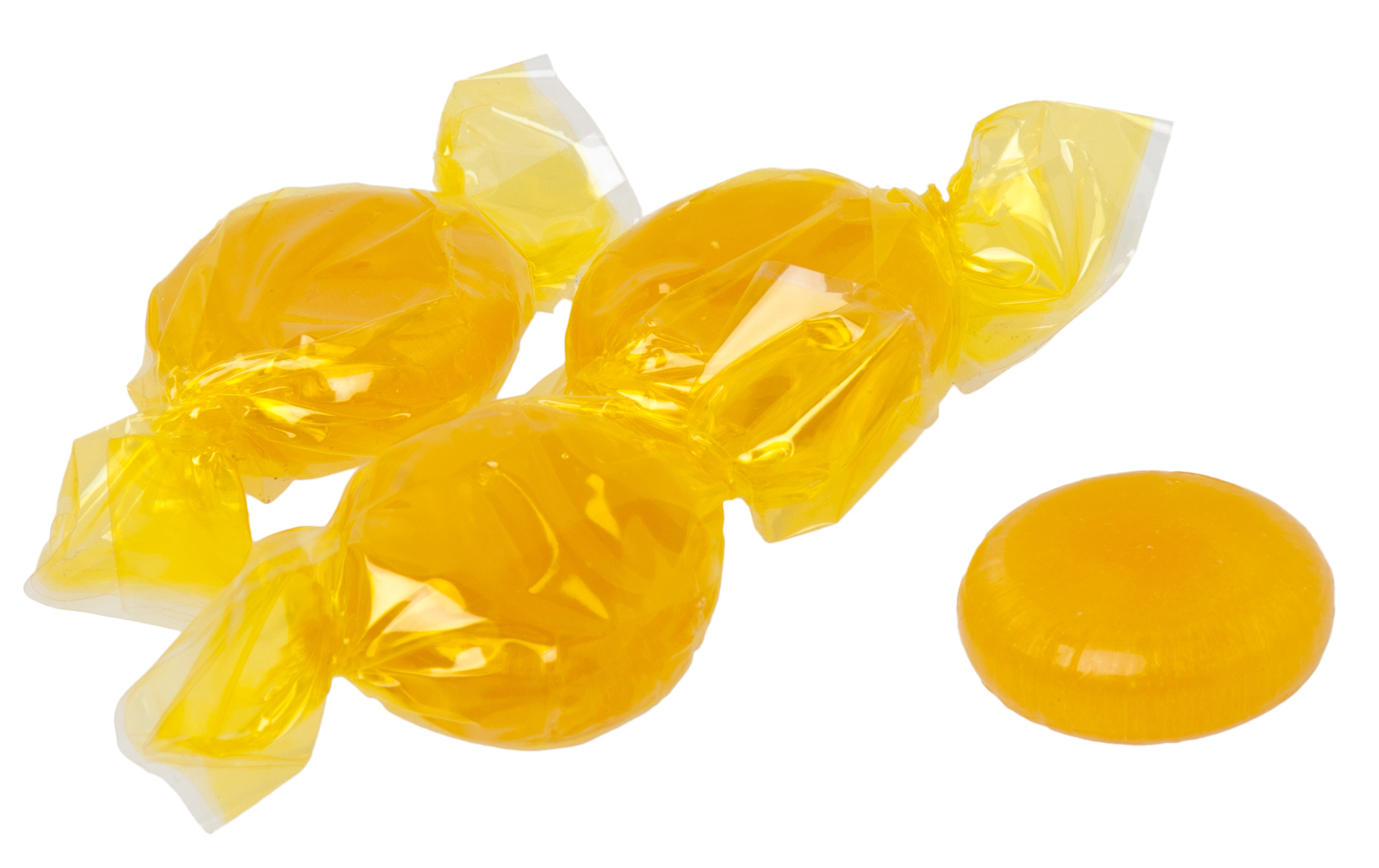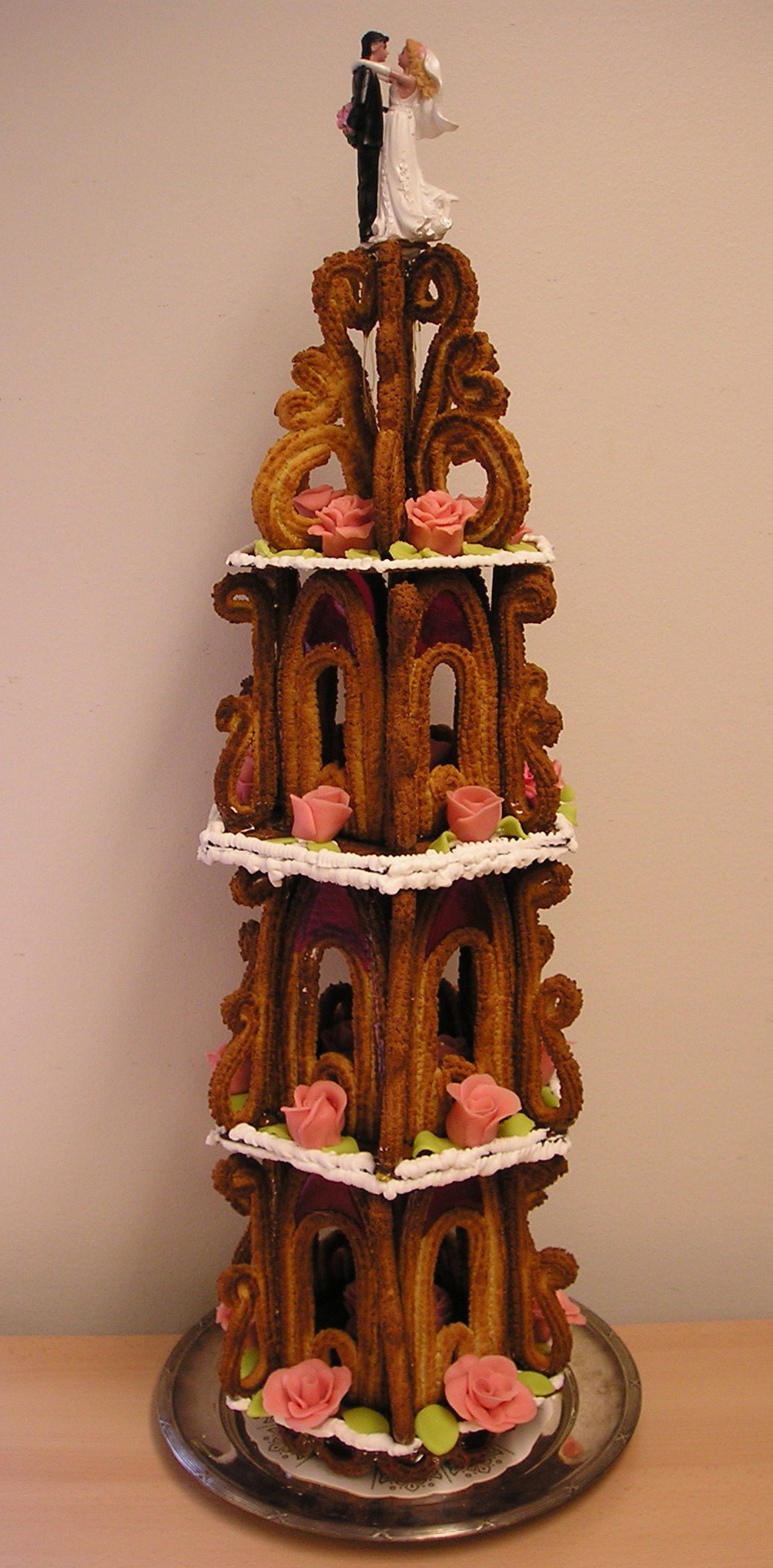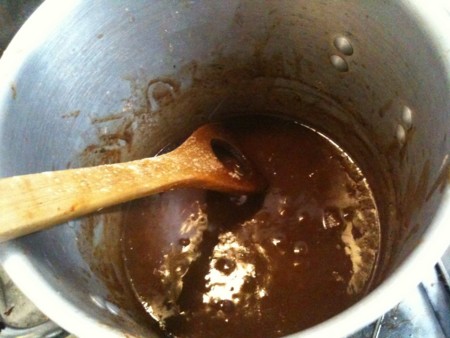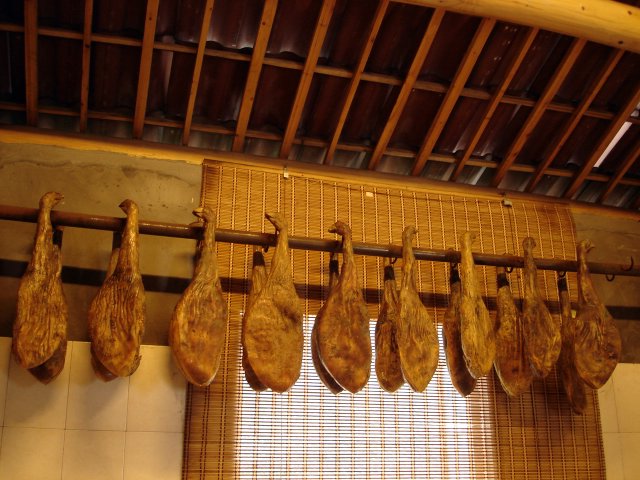|
Glaze (cooking)
In cooking, a glaze is a glossy, translucent coating applied to the outer surface of a dish by dipping, dripping, or using a brush. Depending on its nature and intended effect, a glaze may be applied before or after cooking. It may be either sweet or savory (in pâtisserie, the former is known as ''glaçage''); typical glazes include brushed egg whites, some types of icing, and jam (as in '' nappage''), and may or may not include butter, sugar, milk, oil, and fruit or fruit juice. Examples Doughnut glaze is made from a simple mixture of confectioner's sugar and water, which is then poured over the doughnuts. Some pastries have a coating of egg whites brushed-on. Some pastries use a "mirror glaze", which is glossy enough to create reflections, and some candies and confections are coated in edible wax glazes, often during tumbling. A savory glaze such as demi-glace can be made from reduced stock or meat glaze that is poured onto meat or vegetables. A glazed ham may have its g ... [...More Info...] [...Related Items...] OR: [Wikipedia] [Google] [Baidu] |
Candy
Candy, alternatively called sweets or lollies, is a Confectionery, confection that features sugar as a principal ingredient. The category, also called ''sugar confectionery'', encompasses any sweet confection, including chocolate, chewing gum, and sugar candy. Vegetables, fruit, or Nut (fruit), nuts which have been glaze (cooking technique), glazed and coated with sugar are said to be ''Candied fruit, candied''. Physically, candy is characterized by the use of a significant amount of sugar or sugar substitutes. Unlike a cake or loaf of bread that would be shared among many people, candies are usually made in smaller pieces. However, the definition of candy also depends upon how people treat the food. Unlike sweet pastries served for a dessert course at the end of a meal, candies are normally eaten casually, often with the fingers, as a snack between meals. Each culture has its own ideas of what constitutes candy rather than dessert. The same food may be a candy in one culture ... [...More Info...] [...Related Items...] OR: [Wikipedia] [Google] [Baidu] |
Confectionery
Confectionery is the Art (skill), art of making confections, or sweet foods. Confections are items that are rich in sugar and carbohydrates, although exact definitions are difficult. In general, however, confections are divided into two broad and somewhat overlapping categories: baker's confections and sugar confections. Baker's confectionery, also called flour confections, includes principally sweet pastries, cakes, and similar Baking, baked goods. Baker's confectionery excludes everyday Bread, breads, and thus is a subset of products produced by a baker. Sugar confectionery includes candies (also called ''sweets'', short for ''sweetmeats'', in many English-speaking countries), candied nuts, chocolates, chewing gum, bubble gum, pastillage, and other confections that are made primarily of sugar. In some cases, chocolate confections (confections made of chocolate) are treated as a separate category, as are sugar-free versions of sugar confections. The words ''candy'' (Canada ... [...More Info...] [...Related Items...] OR: [Wikipedia] [Google] [Baidu] |
Meat Glaze
Meat glaze (French: ''glace de viande'') is a dark brown, gelatinous flavouring agent used in food preparation. It is obtained by reducing brown stock through evaporation by slow heating. Compared to demi-glace, meat glaze is about twice as concentrated. Its high viscosity and salt content gives it an unusually long shelf life. Meat glaze is used to add flavor to soups. Early History In the Late Middle Ages, Upper-class families used glazing to elevate the appeal of not just meat but also pies, poultry, and meatballs with gold, green, and even red colored glazes; these glazes would make the meat seem like it was for royalty and more valuable. Differences The main difference between glazes and sauces, and marinades is that glazes are typically brushed on not only meat, but also vegetables and poultry, while sauces are poured or dipped into, and marinades are infused by soaking into the meat. Marinade and glazing are very similar when it comes to cooking and meat. While both ... [...More Info...] [...Related Items...] OR: [Wikipedia] [Google] [Baidu] |
Demi-glace
Demi-glace (, 'half glaze') is a rich brown sauce in French cuisine used by itself or as a base for other sauces. The term comes from the French word ''glace'', which, when used in reference to a sauce, means "icing" or "glaze." It is traditionally made by combining one part espagnole sauce and one part brown stock. The sauce is then reduced by half, strained of any leftover impurities, and finished with a sherry wine. Common variants of demi-glace use a 1:1 mixture of beef or chicken stock to sauce espagnole; these are referred to as "beef demi-glace" (''demi-glace au bœuf'') or "chicken demi-glace" (''demi-glace au poulet''). Preparation Due to the considerable effort involved in making the traditional demi-glace, chefs commonly substitute a simple ''jus lié'' of veal stock or to create a simulated version, which the American cookbook author Julia Child referred to as a "semi-demi-glace" (i.e. sans espagnole sauce). See also * Gypsy sauce * List of sauces * Mea ... [...More Info...] [...Related Items...] OR: [Wikipedia] [Google] [Baidu] |
Marron Glacé
''Marron glacé'' is a confection originating in France or Italy that consists of a chestnut candied in sugar syrup and glazed. It is an ingredient in many desserts and is also eaten on their own. History Candied chestnuts appeared in chestnut-growing areas in Europe shortly after the crusaders returned from the Middle East with sugar. Cooking with sugar allowed creation of new confectioneries.Vegetarians in Paradise According to some, the birth of the ''marron glacé'' occurred around the 16th century (thanks to a greater availability of sugar) in the Cuneo area, where large quantities of chestnuts were collected (and are still collected, to be exported throughout Europe). It seems, according to this theory, that the ''marron glacé'' were invented by a court chef of [...More Info...] [...Related Items...] OR: [Wikipedia] [Google] [Baidu] |
Enrobing
An enrober is a machine used in the confectionery industry to coat a food item with a coating medium, typically chocolate. Frequently enrobed foods include nuts, ice cream, toffee, chocolate bars, biscuits and cookies. In addition to its effects on the taste and mouthfeel, enrobing with chocolate extends a confection's shelf life. Process The process of enrobing involves placing the items on the enrober's feed band, which may consist of a wire mesh or containers in which the confection to be enrobed are placed, with each container having drain holes to recover excess chocolate. The enrober maintains the coating medium at a controlled constant temperature and pumps the medium into a flow pan. The medium flows from the flow pan in a continuous curtain and bottoming bed that the food items pass through, completely coating them. A wire mesh conveyor belt then transports the coated confection to a cooling area. Output mainly comes from the belt width and cooling tunnel length. Exclu ... [...More Info...] [...Related Items...] OR: [Wikipedia] [Google] [Baidu] |
Couverture Chocolate
Couverture chocolate () is a chocolate that contains a higher percentage of cocoa butter (32–39%) than baking or eating chocolate. This additional cocoa butter, combined with proper tempering, gives the chocolate more sheen, a firmer "snap" when broken, and a creamy mellow flavor. Definition and term The total "percentage" cited on many brands of chocolate is based on some combination of cocoa butter in relation to cocoa solids (cacao). In order to be properly labeled as "couverture", the dark chocolate product must contain not less than 35% total dry cocoa solids, including not less than 31% cocoa butter and not less than 2.5% of dry non-fat cocoa solids, milk chocolate couverture must contain not less than 25% dry cocoa solids. The term translates from French as "covering". It is legally regulated in the EU. Dark couverture chocolate almost always exceeds the minimum legally required cocoa content, and despite the law permitting 5% vegetable fat, its inclusion is very r ... [...More Info...] [...Related Items...] OR: [Wikipedia] [Google] [Baidu] |
Pastry Brush
A pastry brush, also known as a basting brush, is a cooking utensil used to spread butter, oil or glaze on food. Traditional pastry brushes are made with natural bristles or a plastic or nylon fiber similar to a paint brush A paintbrush is a brush used to apply paint or ink. A paintbrush is usually made by clamping bristles to a handle with a ferrule. They are available in various sizes, shapes, and materials. Thicker ones are used for filling in, and thinner ones ..., while modern kitchen brushes may have silicone bristles. In baking breads and pastry, pastries, a pastry brush is used to spread a glaze or egg wash on the crust or surface of the food.Julia Child (1996). ''Baking with Julia'' William Morrow and Company Inc. — (USA) In roasting meats, a pastry brush may be used to sop up juices or drippings from under pan and spread them on the surface of the meat to crisp the skin. See also * Basting (cooking) * Pastry chef * Kitchen utensil References [...More Info...] [...Related Items...] OR: [Wikipedia] [Google] [Baidu] |
Glazed Ham
This is a list of notable hams and ham products. Ham is pork that has been preserved through salting, smoking, or wet curing. It was traditionally made only from the hind leg of swine, and referred to that specific cut of pork."Bacon: Bacon and Ham Curing" in '' Chambers's Encyclopædia''. London: George Newnes, 1961, Vol. 2, p. 39. Ham is made around the world, including a number of highly coveted regional specialties, such as Westphalian ham and jamón serrano. Technically a processed meat, "ham" may refer to a product which has been through mechanical reforming. The precise nature of meat termed "ham" is controlled by statute in a number of areas, including the United States and European Union. In addition, numerous ham products have specific geographical indication protection, such as Prosciutto di Parma and Prosciutto Toscano PDO in Europe, and Smithfield ham in the United States. Hams and ham products Bulgaria * Elenski but is a dry-cured ham from the town of Elen ... [...More Info...] [...Related Items...] OR: [Wikipedia] [Google] [Baidu] |
Meat Glaze
Meat glaze (French: ''glace de viande'') is a dark brown, gelatinous flavouring agent used in food preparation. It is obtained by reducing brown stock through evaporation by slow heating. Compared to demi-glace, meat glaze is about twice as concentrated. Its high viscosity and salt content gives it an unusually long shelf life. Meat glaze is used to add flavor to soups. Early History In the Late Middle Ages, Upper-class families used glazing to elevate the appeal of not just meat but also pies, poultry, and meatballs with gold, green, and even red colored glazes; these glazes would make the meat seem like it was for royalty and more valuable. Differences The main difference between glazes and sauces, and marinades is that glazes are typically brushed on not only meat, but also vegetables and poultry, while sauces are poured or dipped into, and marinades are infused by soaking into the meat. Marinade and glazing are very similar when it comes to cooking and meat. While both ... [...More Info...] [...Related Items...] OR: [Wikipedia] [Google] [Baidu] |
Stock (food)
Stock, sometimes called bone broth, is a savory cooking liquid that forms the basis of many dishes particularly soups, stews, and sauces. Making stock involves simmering animal bones, meat, seafood, or vegetables in water or wine, often for an extended period. Mirepoix or other aromatics may be added for more flavor. Preparation Traditionally, stock is made by simmering various ingredients in water. A newer approach is to use a pressure cooker. The ingredients may include some or all of the following: Bones: Beef and chicken bones are most commonly used; fish is also common. The flavor of the stock comes from the bone marrow, cartilage and other connective tissue. Connective tissue contains collagen, which is converted into gelatin that thickens the liquid. Stock made from bones needs to be simmered for long periods; pressure cooking methods shorten the time necessary to extract the flavor from the bones. Meat: Cooked meat still attached to bones is also used as an ... [...More Info...] [...Related Items...] OR: [Wikipedia] [Google] [Baidu] |





